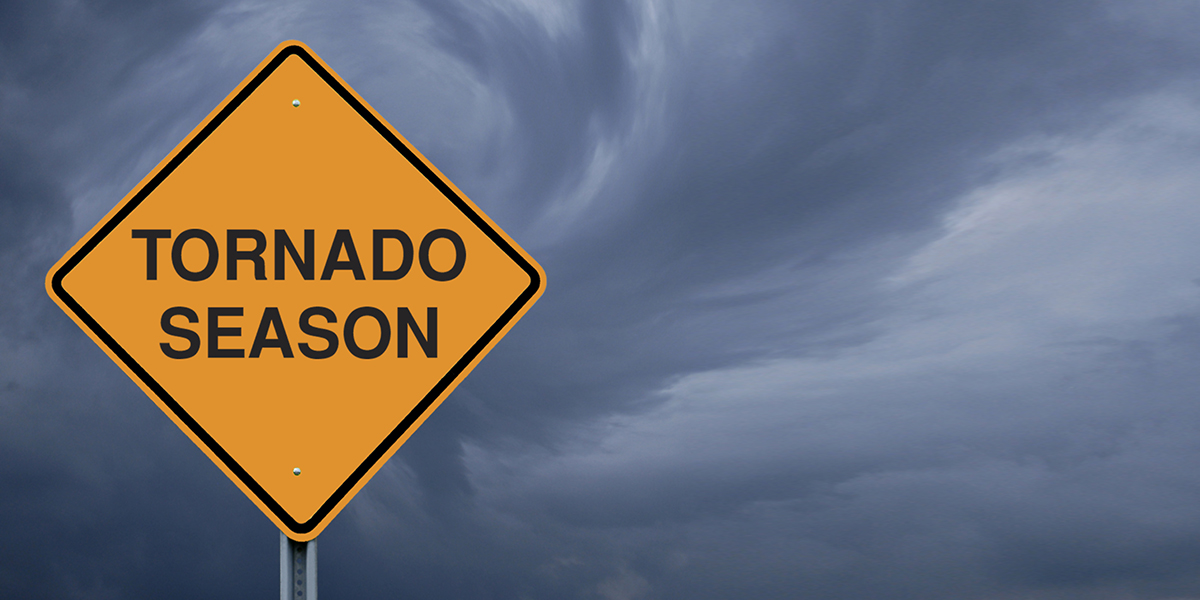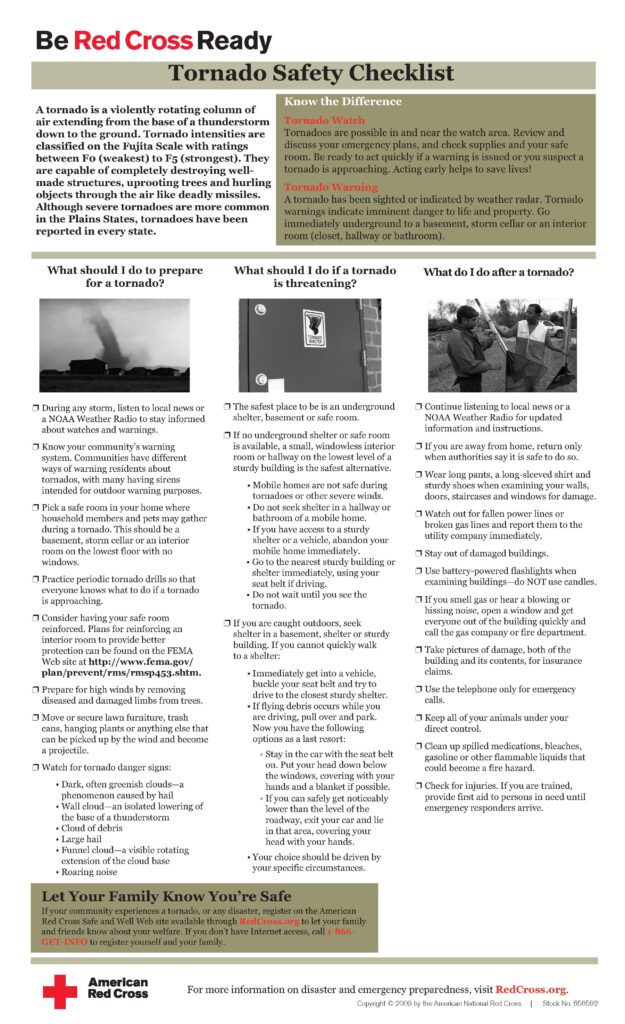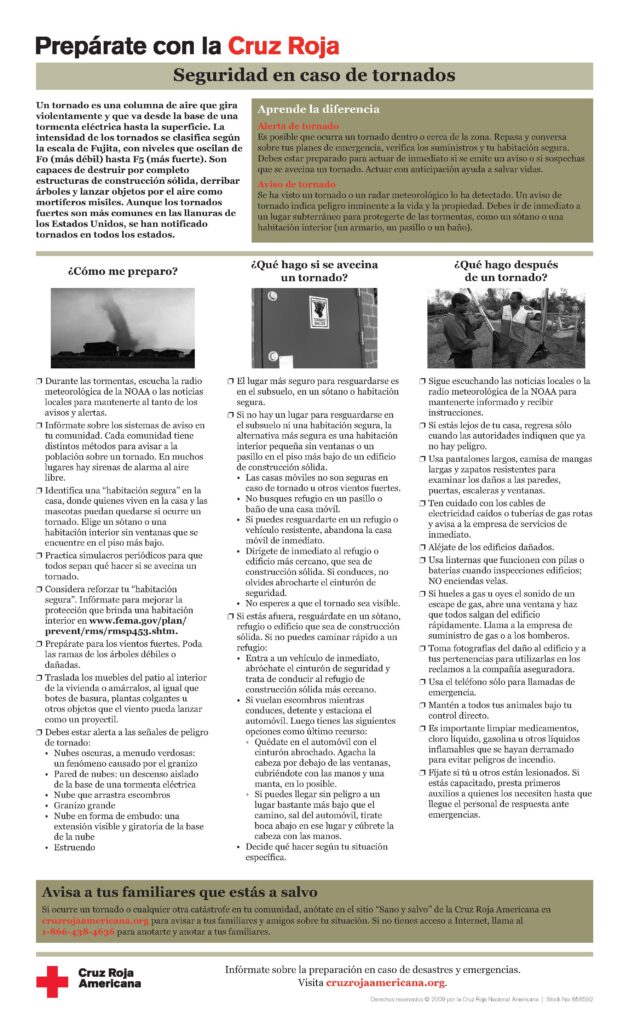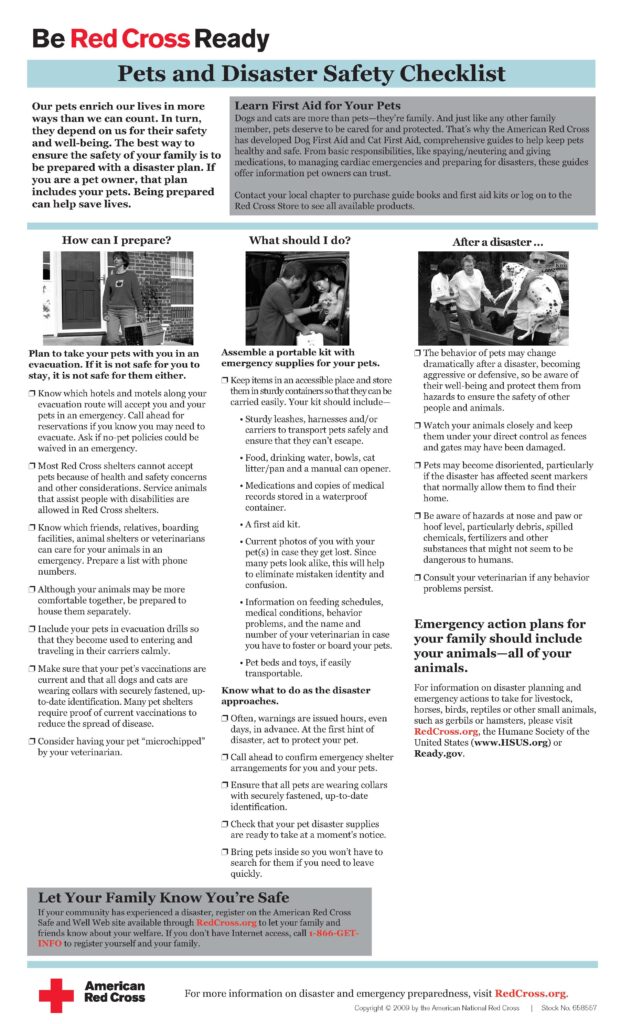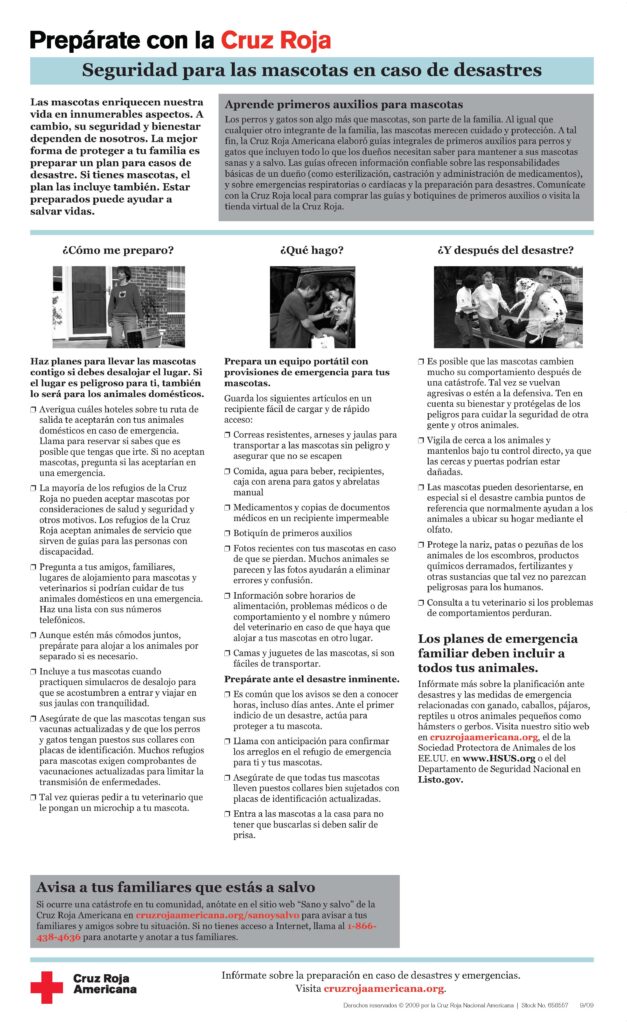WASHINGTON D.C. – With spring approaching, uncertain weather conditions are bound to arise. Instead of being reactive the “Be Red Cross Ready” campaign is trying to help with preventive measures to ensure everyone has the best chance of surviving a tornado. Below is some information on how to keep your family and pets safe in case of this type of event.
Tornado Safety
Learn how to stay safe during a tornado, and how to improve your home’s ability to withstand tornadoes.
About Tornadoes
Tornadoes are violent: they can completely destroy well-made structures, uproot trees and hurl objects through the air like deadly missiles. Although severe tornadoes are most common in the Plains States, they can happen anywhere. Learn what to do to keep your loved ones safe.
Top Tips
- Identify a safe place in your home where household members and pets will gather during a tornado: a basement, storm cellar or an interior room on the lowest floor with no windows.
- In a high-rise building, pick a hallway in the center of the building. You may not have enough time to go to the lowest floor.
- In a mobile home, choose a safe place in a nearby sturdy building. If your mobile home park has a designated shelter, make it your safe place. No mobile home, however it is configured, is safe in a tornado.
Know the difference!
A tornado WATCH means a tornado is possible.
A tornado WARNING means a tornado is already occurring or will occur soon. GO TO YOUR SAFE PLACE IMMEDIATELY.
What Should You Do Before a Tornado?
Prepare in Advance
Be sure you’re Red Cross Ready. That means:
- Assembling an emergency preparedness kit.
- Creating a household evacuation plan that includes your pets.
- Staying informed about your community’s risk and response plans.
- Ensuring each family member knows how to get back in touch if you are separated during an emergency.
- Download the Emergency App for iPhone or Android
How to Prepare for Tornadoes
Protecting Your Family
- Talk about tornadoes with your family so that everyone knows where to go if a tornado warning is issued. Discussing ahead of time helps reduce fear, especially for younger children.
- Check at your workplace and your children’s schools and day care centers to learn about their tornado emergency plans. Every building has different safe places.
- Ensure that every member of your family carries a Safe and Well wallet card.
- Make sure you have access to NOAA radio broadcasts, either through streaming an online NOAA radio station, downloading a NOAA radio app in the Apple Store or Google Play or purchasing a battery-powered or hand-crank NOAA radio in the Red Cross Store
- Check emergency kit and replenish any items missing or in short supply, especially medications or other medical supplies. Keep it nearby.
Protecting your home
- Make a list of items to bring inside in the event of a storm.
- Make trees more wind resistant by removing diseased or damaged limbs, then strategically remove branches so that wind can blow through. Strong winds frequently break weak limbs and hurl them at great speed, causing damage or injury when they hit.
- Remove any debris or loose items in your yard. Branches and firewood may become missiles in strong winds.
- Consider installing permanent shutters to cover windows. Shutters can be closed quickly and provide the safest protection for windows.
- Strengthen garage doors. Garage doors are often damaged or destroyed by flying debris, allowing strong winds to enter. As winds apply pressure to the walls, the roof can be lifted off, and the rest of the house can easily follow.
Right Before a Tornado
Don’t wait until you see the tornado to act! If you do nothing else:
- Listen to local area radio, NOAA radio or TV stations for the latest information and updates.
- Move to an underground shelter, basement or safe room. If none is available, a small, windowless interior room or hallway on the lowest level of a sturdy building is the safest alternative.
* Remember: no area of a mobile home is safe during a tornado. If you have access to a sturdy shelter or a vehicle, go there immediately, using your seat belt if driving. *
- Find a local emergency shelter and know the best routes to get there if you need to.
Then, if you can, do this:
- Watch for tornado danger signs: dark, often greenish clouds – a phenomenon caused by hail; wall cloud – an isolated lowering of the base of a thunderstorm; cloud of debris.
- Move or secure any of the items on your list of items to bring inside or anything else that can be picked up by the wind.
- Bring your companion animals indoors and maintain direct control of them.

